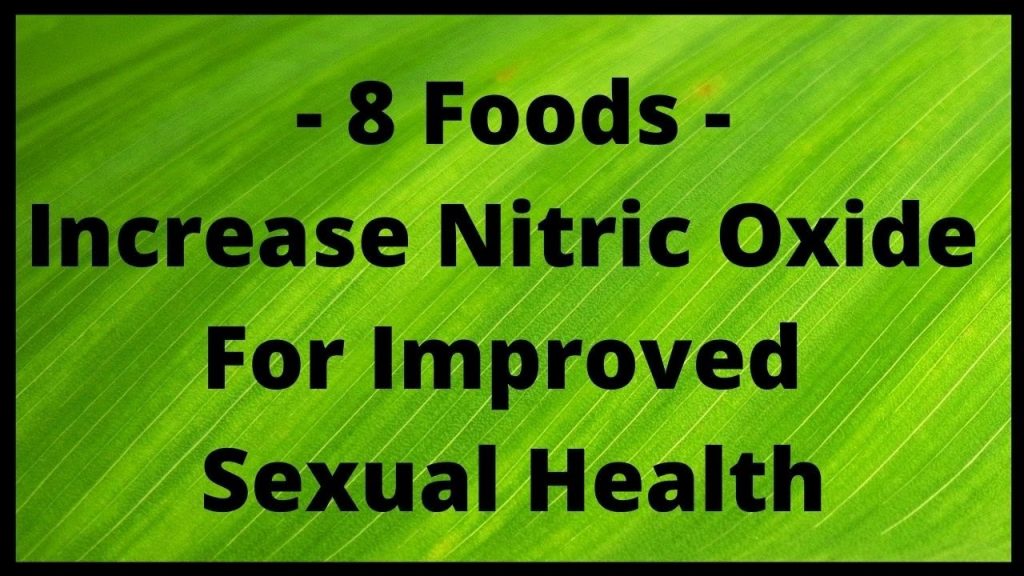Are you looking for a natural way to boost your cardiovascular health? Look no further than nitric oxide, a molecule that helps relax blood vessels and improve blood flow.
While there are supplements available on the market, the best way to increase your nitric oxide levels is through consuming foods that naturally contain it. In this article, we will provide you with a comprehensive list of natural sources of nitric oxide.
Leafy greens such as spinach and kale are excellent sources of nitrates, which can be converted into nitric oxide in the body. Beets are another great source of nitrates and have been shown to improve exercise performance and reduce blood pressure in some studies. Garlic also contains compounds that stimulate the production of nitric oxide in the body.
Citrus fruits like oranges and grapefruits contain high levels of vitamin C, which has been shown to enhance nitric oxide production. Lastly, nuts and seeds such as walnuts, almonds, chia seeds, and pumpkin seeds contain arginine, an amino acid that can also be converted into nitric oxide in the body.
Incorporating these foods into your diet can help improve your overall cardiovascular health by increasing your body’s natural production of nitric oxide.
Key Takeaways
- Leafy greens like spinach and kale are excellent sources of nitrates which can be converted into nitric oxide.
- Beets are another great source of nitrates and have been shown to improve exercise performance and reduce blood pressure.
- Garlic contains compounds that stimulate the production of nitric oxide in the body.
- Citrus fruits like oranges and grapefruits contain high levels of vitamin C, which enhances nitric oxide production.
Leafy Greens
Leafy greens like spinach, kale, and arugula are packed with nitric oxide – they’re like little powerhouses of health! Consuming leafy greens can bring a host of benefits to your body.
They are rich in vitamins A, C, and K which help support the immune system and improve bone health. Leafy greens also contain high levels of antioxidants that protect against cell damage caused by free radicals.
If you’re looking for ways to incorporate leafy greens into your diet, there are plenty of options available. You can add them to smoothies or juices for a quick and easy boost in nutrients. Alternatively, try sautéing or roasting them as a side dish for your meals.
Another great way to enjoy them is by making salads with flavorful dressings that complement their taste. By including more leafy greens in your diet, you can increase your intake of nitric oxide which helps improve blood flow and lower blood pressure.
So why not make it a point to include these superfoods in your meals? With all the benefits they offer, it’s definitely worth adding them to your plate!
Beets
If you want to boost your athletic performance, adding beets to your diet is a must. Beets are one of the richest natural sources of nitric oxide, which helps improve blood flow and oxygen delivery to muscles during exercise.
Here are three ways beet juice can benefit athletes:
Improved endurance: Drinking beet juice before exercise has been shown to increase the time it takes for an individual to fatigue during high-intensity exercise.
Increased power output: A study found that consuming beetroot juice prior to a cycling time trial improved mean power output by 5 watts and increased speed by 1.3 km/hour.
Reduced muscle soreness: The anti-inflammatory properties of beets can help reduce muscle soreness after intense exercise.
To incorporate beets into your diet for maximum nitric oxide production, try drinking fresh beet juice or blending cooked beets into smoothies or salads. You can also roast or steam beets as a side dish with meals.
Aim for at least one serving of beets per day to reap their athletic performance benefits.
Garlic
Garlic, known as the "stinking rose,"is a pungent and flavorful addition to any dish. But did you know that it also has potential health benefits for your blood pressure? Garlic contains compounds that can help dilate blood vessels and improve circulation, leading to lower blood pressure levels. Studies have shown that consuming garlic regularly may help reduce systolic and diastolic blood pressure.
If you’re looking to incorporate more garlic into your diet for its potential health benefits, there are plenty of ways to do so! You can add fresh or roasted garlic to soups, stews, stir-fries, or pasta dishes. You can also make a simple garlic vinaigrette by mixing minced garlic with olive oil and vinegar. Another option is to take garlic supplements in pill form.
It’s important to keep in mind that while incorporating more garlic into your diet may offer potential benefits for your blood pressure, it shouldn’t be relied on as the sole treatment for hypertension. As always, it’s best to speak with a healthcare professional before making any significant changes to your diet or lifestyle.
Citrus Fruits
You’ll love adding citrus fruits to your diet because they can provide a burst of refreshing flavor while potentially aiding in lowering your blood pressure levels.
Citrus fruits such as oranges, lemons, and grapefruits are rich in vitamin C, which is an antioxidant that helps reduce inflammation in the body. In addition to this, studies suggest that consuming citrus fruits regularly may also help improve heart health.
One of the most significant benefits of citrus fruits for cardiovascular health is their ability to lower blood pressure levels. The flavonoids found in citrus fruits have been shown to help relax blood vessels and improve arterial function, thereby reducing blood pressure levels.
Citrus fruits have also been linked to athletic performance enhancement. The high levels of vitamin C found in these fruits can help reduce muscle soreness and fatigue after exercise by neutralizing free radicals produced during physical activity. Additionally, research has shown that consuming citrate-rich foods like lemon juice may be beneficial for endurance athletes as it can enhance aerobic capacity and delay fatigue during prolonged exercise.
So, don’t hesitate to add some juicy oranges or tangy grapefruits into your post-workout snack!
Nuts and Seeds
Get ready to boost your heart health with the delicious and convenient snack of nuts and seeds! These natural sources of nitric oxide aren’t just tasty, but they’re also packed with nutritional benefits. Nuts and seeds contain healthy fats, fiber, protein, vitamins, minerals, and antioxidants that can help reduce inflammation, lower cholesterol levels, regulate blood sugar levels, support brain function, enhance immune system function, and prevent chronic diseases.
Here are three examples of nuts and seeds that you can easily incorporate into your diet:
Almonds: These crunchy nuts are a great source of vitamin E (an antioxidant), magnesium (a mineral that supports muscle relaxation), and monounsaturated fats (the same type found in olive oil). You can eat them as a snack or add them to salads, oatmeal, smoothies or baked goods.
Chia Seeds: These tiny black or white seeds are packed with omega-3 fatty acids (which have anti-inflammatory properties), fiber (which promotes satiety), calcium (which supports bone health) and iron (which helps transport oxygen in the blood). You can sprinkle them on yogurt or cereal or use them as an egg substitute in vegan recipes.
Pumpkin Seeds: These greenish-white seeds are known for their high zinc content (an essential mineral for immune function) but also contain magnesium, phosphorus, manganese and copper. You can roast them with some spices for a savory snack or sprinkle them on top of soups or salads for added crunch.
In addition to snacking on nuts and seeds raw or roasted plain, there are many culinary uses for these versatile ingredients. Try making nut butter spreads like almond butter or cashew butter to enjoy on toast; mix ground flaxseed into pancake batter for extra nutrition; use sesame seeds as a crust for fish fillets; add walnuts to pesto sauce instead of pine nuts; make energy balls with dates and sunflower seeds. The possibilities’re endless!
Conclusion
So, there you have it – a comprehensive list of natural sources of nitric oxide. Incorporating these foods into your diet can offer numerous health benefits, including improved blood flow and lower blood pressure. Not only that, but they’re also delicious and easy to include in meals!
But wait, there’s more! Did you know that incorporating exercise into your routine can also increase nitric oxide production? That’s right, getting active can boost your body’s levels of this important molecule.
So, why not combine some leafy greens and beets with a workout for an extra dose of nitric oxide? Your body will thank you for it!


